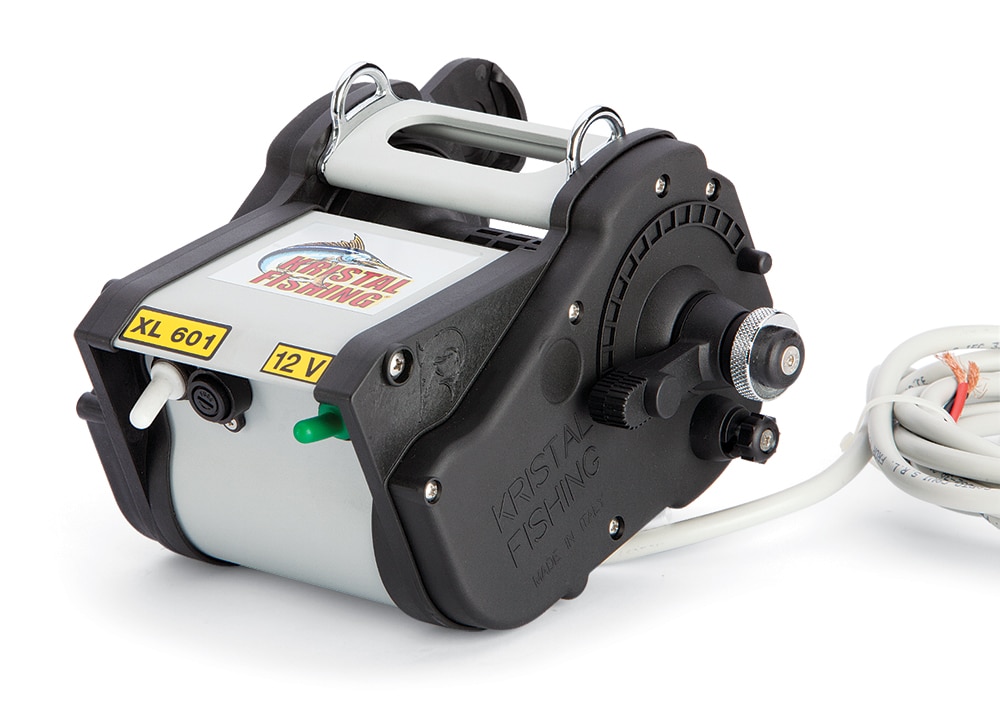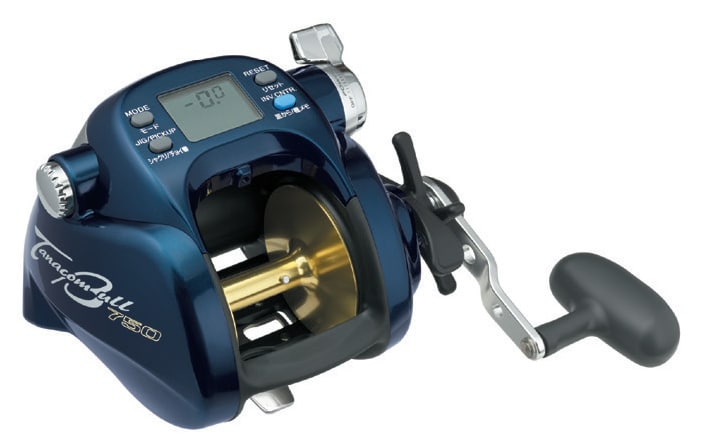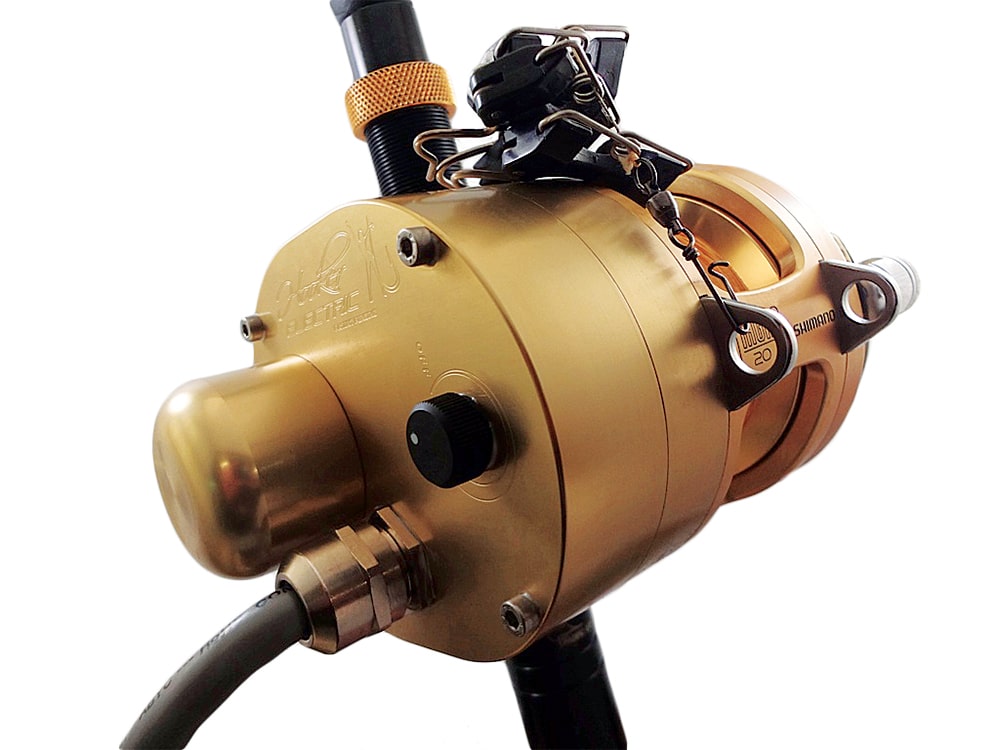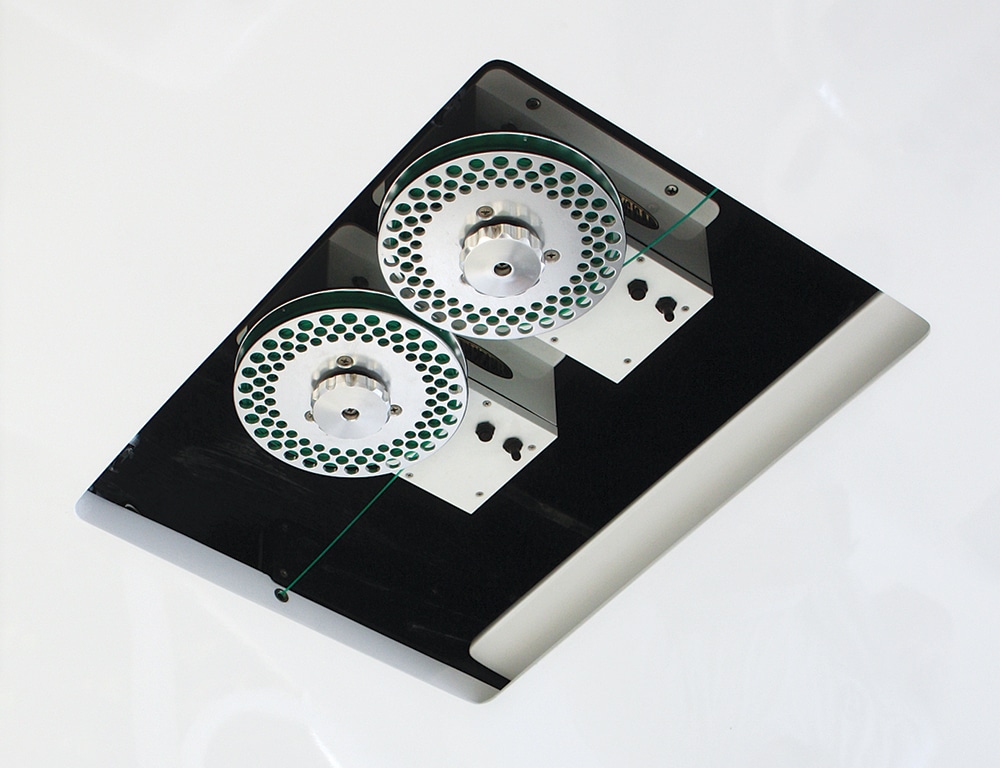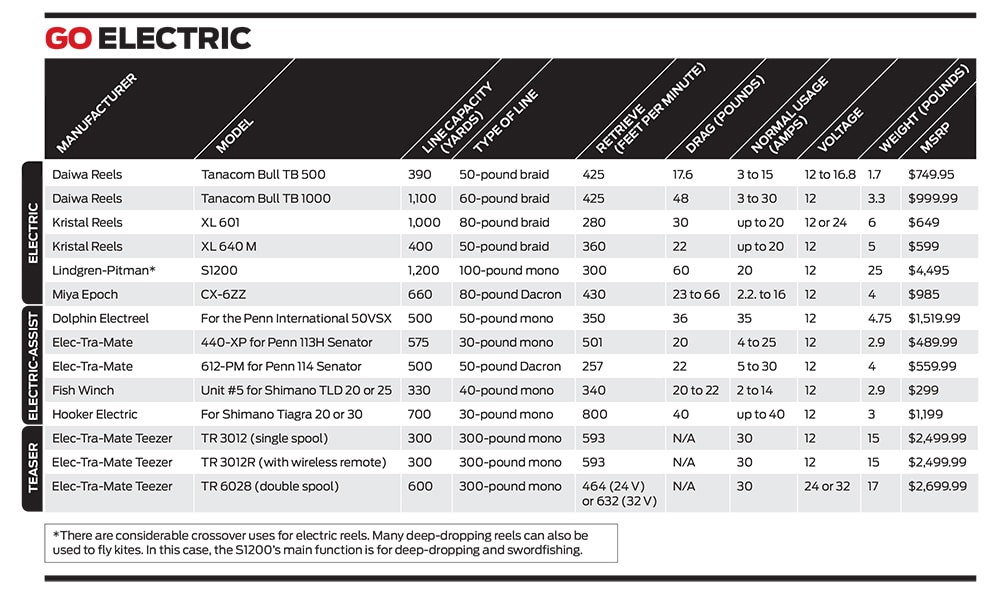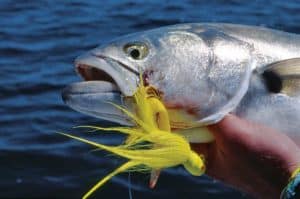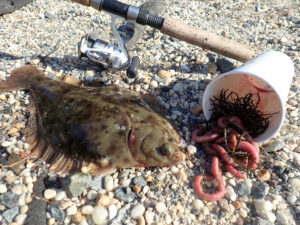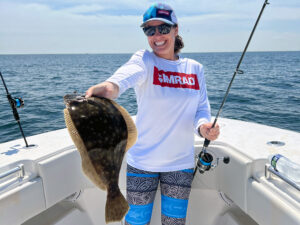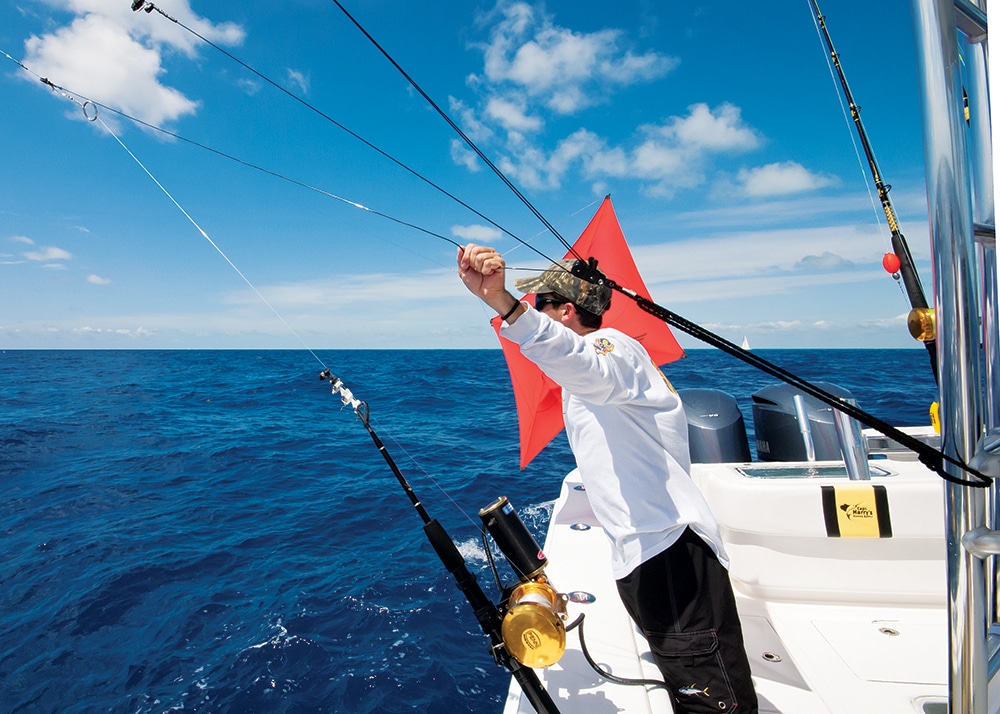
Work smarter, not harder. It’s a phrase that always pops up when talking about workplace productivity. So why can’t we apply that same mantra to offshore trolling and kite-fishing?
Kite and teaser reels receive little fanfare among even the most ardent weekend warriors. Yes, they are fishing reels that don’t actually catch fish. And yep, the manual ones are a real pain to reel over and over.
Yet many tournament-boat captains swear by the electric-style models. And they often prove their worth with victories or memorable catches.
In 2012, Capt. Quinton Dieterle and his crew aboard Get Lit released 36 sailfish, a new one-day record for the Silver Sailfish Derby out of West Palm Beach, Florida.
“We were flying two kites, with three baits each, from Kristal kite reels, rigged with 50-pound Spectra,” says Dieterle, a Miami tournament captain.
In total, 46 boats released 1,174 sailfish in three days of fishing — a majority of whom, I bet, were using electric kite reels. So who’s working smarter?
Wired Up
Constantly deploying and retrieving kites, teasers, and dredges off the stern is exhausting.
“If you hand-crank a manual kite reel 30 times in one day,” says Capt. Harry Vernon III, of Capt. Harry’s Fishing Supply (captharry.com) in Miami, “you’d say, ‘I’m done with this. I’m done kite-fishing.’ That’s why we always recommend the electric models at the shop — it’s worth the extra cost.”
That’s where a little power comes into play.
Most electric kite and teaser reels plug into your boat’s 12-volt power system. Some kite reels are also available at higher voltage, such as the XL 601 from Kristal Reels (12 or 24 volts, $649).
“Most kite reels draw low amps,” says Vernon, “so you’ll have no problem using a stand-alone battery during the day.” (The accompanying chart compares normal usage for various reels.)
Fishermen knowledgeable about boat wiring can hook a reel directly to a dedicated, deep-cycle battery stowed in a console or compartment. Make sure to include an in-line fuse or circuit breaker per the manufacturer’s recommendation as a safeguard, and use solid connections to the power source via ring terminals or marine receptacles. Wiring schematics are available on some of the reel manufacturers’ websites.
For a more portable package, electric-reel makers, such as Elec‑Tra‑Mate, offer battery cases that include a handle, 15- or 30-amp marine receptacle, and a weatherproof cover.
High Flying
So how exactly does an electric kite reel catch more fish?
“Speed!” says Alex Zerbone, president of Kristal Fishing. “You can retrieve the kite out of the way as soon as the fish bites.”
He’s right. Just a flick of a switch recovers the kite, but the retrieve is not so fast that it risks breaking a kite’s spar.
“Our best-selling kite reel is the XL 601,” Zerbone says. “It draws about 5 to 6 amps per hour, and spikes at 10. Retrieve time is about two minutes.”
Kristal’s XL 640 M kite reel ($599) handles up to 25 pounds of dead weight. The reel also features a sensitive drag to adjust pressure during the retrieve. The “M” in 640 M stands for manual override, an option that allows the angler to hand-reel the unit.
“Having that manual option helps,” says Ray Rosher, captain of Miss Britt out of Miami. “We’ll hand-reel if something happens to the power, or if the electric needs some help against the wind.”
Beyond speed, the reels offer versatility too.
“Electric reels allow you to bring in more than one reel at once,” says Vernon. “Toggle the switch to retrieve, and start working on another reel. Sometimes you have to get those lines in fast.”
That ability to multitask comes in handy when you want to pick up and reset the kites quickly.
The Daiwa Tanacom Bull 1000 ($999.99) electric reel is so tough that it doubles as a deep-drop reel. It’s easy to wind in a kite with one button, and it automatically stops with a programmable feature. A digital readout measures line as it’s deployed or retrieved.
The Ultimate Tease
Carl Huffman, owner of Elec-Tra-Mate fishing reels, has noticed growth in the number of anglers using electric reels for teasers.
“The motor is capable of cranking much faster than a person can reel,” says Huffman. “Imagine you’re marlin fishing. When that fish comes up on a teaser, you have to reel as fast as possible so it doesn’t eat it.”
Elec-Tra-Mate produces the Teezer Reel ($2,499.99) that can be controlled with a wireless remote from up to 250 feet away. Available in 12, 24 and 32 volts, the Teezer comes with either one or two spools, depending on the model.
The Teezer features the ability to set home and fishing positions, an automatic speed selection for pulling lures or dredges, and an alarm when a fish grabs the lure. Maximum amp draw is about 30, a light load is 5 to 10, says Huffman.
Capt. Kevin Nakamaru (fishingnorthernlights.com) uses four single-spool electric teasers on his boat, Northern Lights, when he’s targeting blue marlin out of Kona, Hawaii.
Nakamaru trolls his teasers differently now that he has independent reel functionality.
“When we bait-and-switch for marlin, we set up a square pattern [of teasers],” says Nakamaru. “Two on the inside, at wave four; two back, at wave six.
“We’re now able to run big teasers — like the Marlin Magic Super Dog and Mold Craft Wide Range — short, near the boat. And big teasers mean bigger fish. If you raise the fish up short, there’s a better chance of hooking them.”
Tournament boats regularly use more than one reel to pull numerous dredges or teasers. Using one double-spool is an option for offshore center-consoles without the extra overhead room.
“When we had to reel the teasers in at the same time, it could actually confuse the marlin,” said Nakamaru. “It jumps from one teaser to the other, and then goes down. We always try to keep the fish on the teaser it came in on.”
Whether targeting billfish or bluefins, there’s no confusion about electric reels. Give yourself a power advantage. Electric teaser and kite reels make offshore trips easier. Work smarter, not harder.
Add-Ons
You don’t have to use a stand-alone electric reel to have the power. Companies such as Fish Winch, Hooker Electric, Dolphin Electreel, Elec-Tra-Mate and Lindgren-Pitman convert Penn, Daiwa and Shimano conventional reels into electrics.
They are often used as a power-assist option when deep-drop fishing, but there’s no reason one couldn’t be used to handle kites or dredges.
In general, it’s easier to control a kite with a lever-drag reel, especially when letting line out. The Hooker Electric Kite Reel attaches to Shimano Tiagra 20 or 30 reels.
“All of our reels use a brushless motor system,” says Trista Evans, vice president of Hooker Electric. “You don’t lose any torque or drag from the Shimano Tiagra reel.”
Next up for Hooker Electric is a detachable drive.
“You can take your motor off the reel and reel manually,” explains Evans. “If you don’t want to hand-crank anymore, just pop it back on, and push the button.”
Contacts
Daiwa
Cypress, California
562-375-6800
Elec-Tra-Mate
Greensboro, North Carolina
336-273-9101
Fish Winch
Wilmington, North Carolina
910-470 -2888
Hooker Electric
Fort Lauderdale, Florida
954-530-6908
Kristal Fishing
Miami, Florida
561-629-0884
Lindgren-Pitman
Pompano Beach, Florida
954-943-4243

